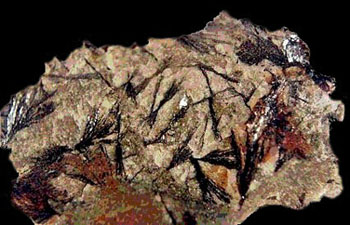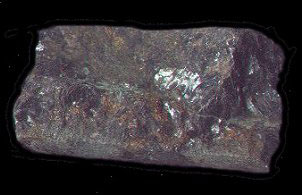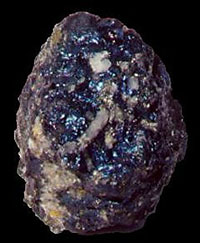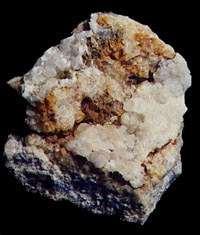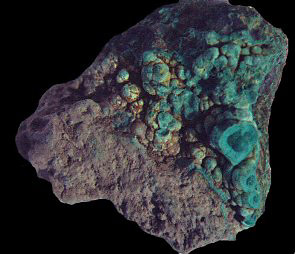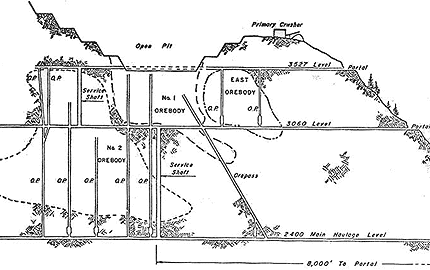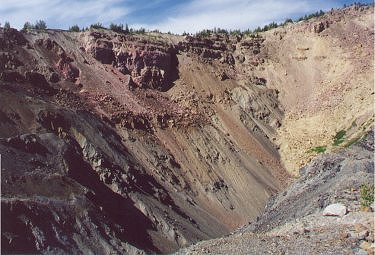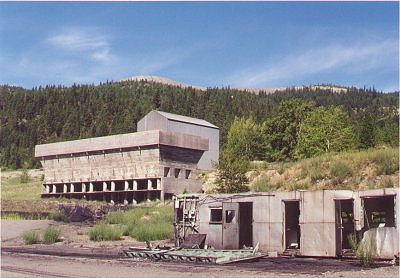 |
|||
|
|||
|
Copyright The Craigmont Mine BY JOHN RATCLIFFE
Geological SummaryOver 225 million years ago, during the Triassic Period, the Nicola Valley was covered by thousands of feet of volcanic rock. From the geological record, waves once lapped at the sides of Promontory Hill, which was situated next to the inland sea that covered most of Canada at the time. It is not possible or relevant here to discuss the many complex geological events that occurred in the region over the next 200 million years, such as the collision of terrains, local erosion, and the formation of the Columbia and Canadian Rocky Mountain systems. However, it is the more recent geological events that played an important role in exposing the ore-bodies in the area. Approximately one million years ago, during the ice age of the Pleistocene Period, glacial ice gouged away some of the lava that covered the Craigmont ore-bodies, leaving behind a layer of gravel that partially filled the Nicola Valley and upper slopes of Promontory Hill. At one time, two meters of gravel actually covered the highest outcrop of the ore body.
Ore MineralsThe original ore body consisted of a variety of minerals, including precious metals. Minerals recovered included magnetite (Figure 1), iron, pure copper (Figure 2), silver, gold, along with significant chalcopyrite and specularite, hematite (Figure 3), bornite (Figure 4), calcite (Figure 5), orthoclase, garnet, epidote, amphibole, tourmaline, diopside, and malachite (Figure 6).
Mining History and OperationsThe ore-bodies were discovered during the early 1940's. The location of the Craigmont Mine was ideal for ore shipment. The mine was just 15 km northwest of what is today the city of Merritt, and 200 km northeast of Vancouver. Elevation in the area runs from 565 m at the Nicola River to 1,734 m at the summit of Promontory Hill. The mine covered a total of 7,000 acres.From it's beginning in 1961 the Craigmont Mine added over 426 million kilograms of copper to the world market and grossed over $450 million in sales (Figure 7). Production costs including wages were $112 million. The Craigmont's net earnings over its life span were $115 million and paid its shareholders $107 million in dividends. Both the federal and provincial governments received $74 million in direct taxes and royalties. In February 2000 the mine ceased operation as a consequence of the falling price of copper. Over 5,000 people were employed at the Craigmont between 1946 and 1983. In 1983, Pinecrest Gold Mines Ltd. was formed and the Craigmont Mine was terminated. At one time, there were 660 people employed during its peak operation. By 1977, the annual payroll had reached $7,193,000.
Now came the task of transporting thousands of tones of ore down the steep mountainside (Figure 9). Underground ore-passes were eliminated due to expense, construction time and winter conditions. A cable supported belt system was built measuring 1,740 meters and 76 centimeters wide, with a fall of 342 meters. A 4-centimeter diameter steel cable supported and drove the belt. Power to turn the cables came from a 370 hp electric motor, thus enabling the belt to carry 360 tons of raw ore an hour. This whole system cost (at that time) $400,000.
The reality is that no mine can continue producing forever. M. Shewchuk, the author of "The Craigmont Story", writes:
"Mining is an industry that deals with a finite resource. The life of a mine is determined by the size and the nature of the ore body and the ability of men and women to extract the minerals profitably."
Mineral CollectingI was granted permission from the Craigmont Mine to conduct collecting tours for the 2001 season, and I look forward to visiting this mine. The Craigmont may provide collectors with some interesting specimens, and further exploration of this locality would help determine whether sources still exist. Additional information about the mine and mineral specimens is welcome.
Copyright © 2001 John Ratcliffe This article may not be copied, distributed or reprinted in any form without the author's permission. To contact the author, please use the e-mail address provided. If you are unable to contact the author, please contact the Canadian Rockhound. Authorized reprints must acknowledge the author, and the Canadian Rockhound, and include the website URL address of the Canadian Rockhound.
|
||||
 
Copyright © 2001 Canadian Rockhound
Back Issues |
News & Events |
Junior Rockhound
|
||||
